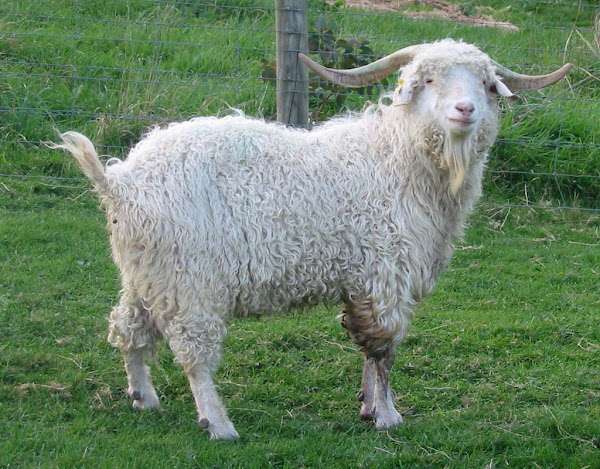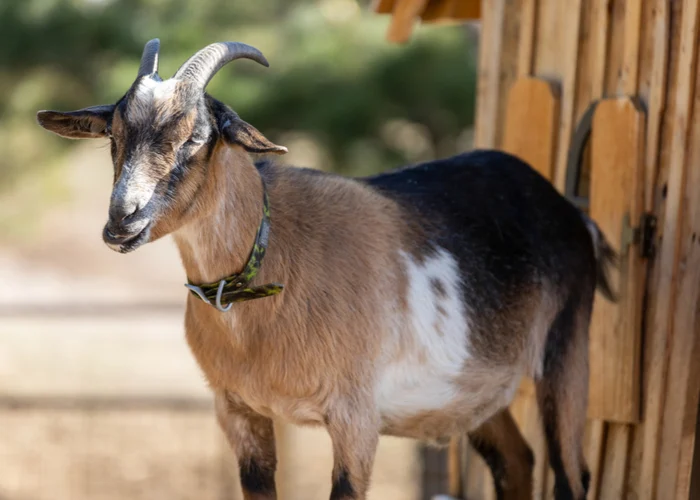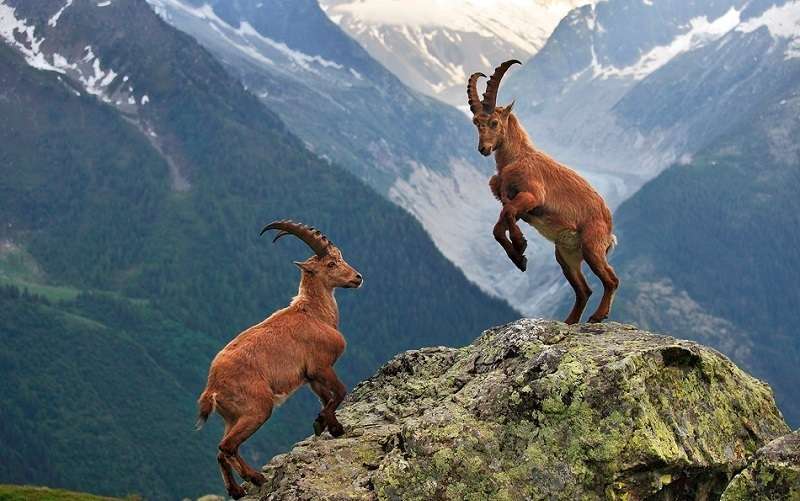
Description:
It has a light, delicate frame and a small head with semi-lop ears. It typically has horns, which are typically twisted, lengthy, and powerful in billies. The animal is totally covered in a coat of long ringlets of fine and lustrous mohair, with the exception of the face and legs. The undercoat, which grows far longer than the outside hair coat in this breed alone, is what is visible instead of the goat hair that may be seen on other breeds. Normally, the face and coat are white, however brown, black, and gray animals can also be found, especially in southern Turkey.
Behavior:
In contrast to many other goat varieties, angora goats are renowned for being exceptionally gentle, calm, and submissive. These amiable goats are placid and quiet by nature, which has the drawback of making them vulnerable to attack from other species if they are in a mixed flock.
Benefits/Uses:
Mohair is the name given to the fiber obtained from an Angora goat. Between four and five kilograms of hair are produced annually by a single goat. Twice a year, angoras are sheared.
The top four nations for producing mohair are South Africa, Argentina, the United States, and Turkey.
Origin/History:
It is unknown where the Angora came from. The earliest Western account may be that written in 1555 by Pierre Belon, who saw goats with snow-white “… wool so delicate that one would judge it finer than silk… ” when traveling from Heraclea to Konya in southern Turkey. Charles V, Holy Roman Emperor, introduced the first Angora goats to Europe in or around 1554; nevertheless, they were not as successful as later imports.
Turkey had about 6 million Angora goats in 1960; however, the number rapidly decreased after that. In 2004, there were over 7.2 million goats in the country, little over 5% of which were Angora goats and the rest were hair goats. In 2003, a programme for Angora conservation was launched.
Keeping as Pet:

Enclosure, Shelter Conditions & Setup
- Enclosure
The Angora goat does best in a small barn or shelter with access to pastures. These goats, as was previously mentioned, can be rather fragile, thus they require access to a shelter that can protect them from the elements. For feeding and exercise, they also require access to pastures.
- Bedding
To help keep them dry and comfortable, they will need dry bedding like hay or straw (straw is better at remaining dry than hay).
- Environmental Conditions
These goats favour shade in the summer and sun exposure in the winter. Since Angora goats are susceptible to both heat and cold stress, the enclosure should keep them warm in the colder months and cool in the summer. After shearing in the late summer, they are especially susceptible to cold stress.
- Fencing
As long as the fences are secure in and of themselves, installing fences around your pastures will guarantee the safety of your Angora goats. Three to four foot high fences would be adequate. You should be aware that Angoras prefer to crawl under fences rather than jump over them, so make sure there is no room available for them to do so. Avoid using woven or barbed wire fences and instead think about using cattle panels or electric fences. Goats that produce angora fibers are susceptible to having their horns or hair entangled in woven and barbed wire fences.
Table





